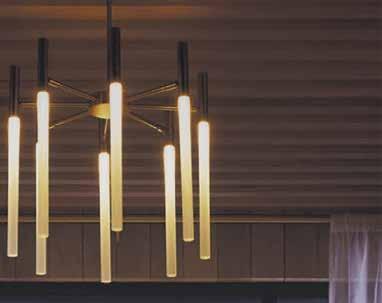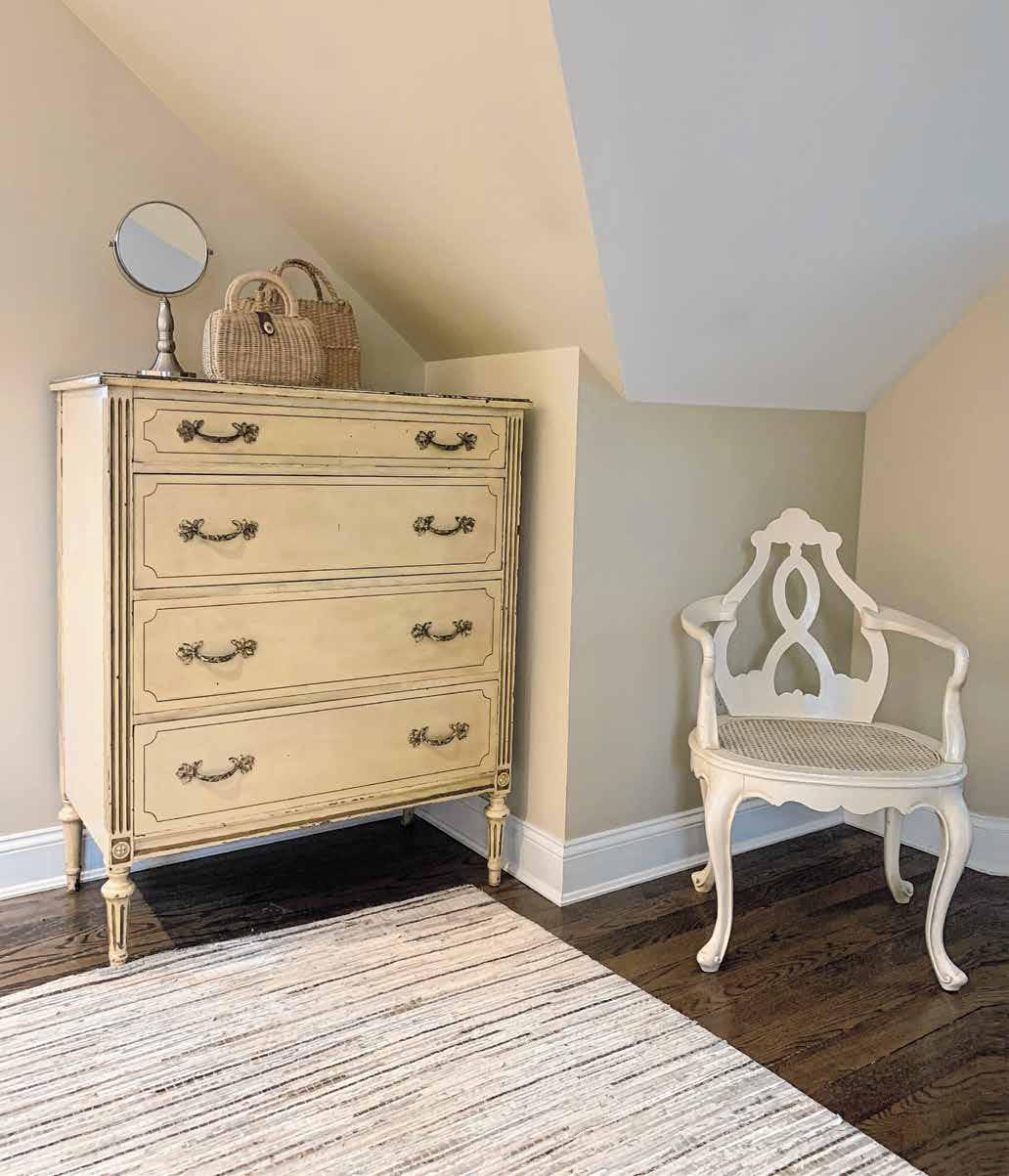
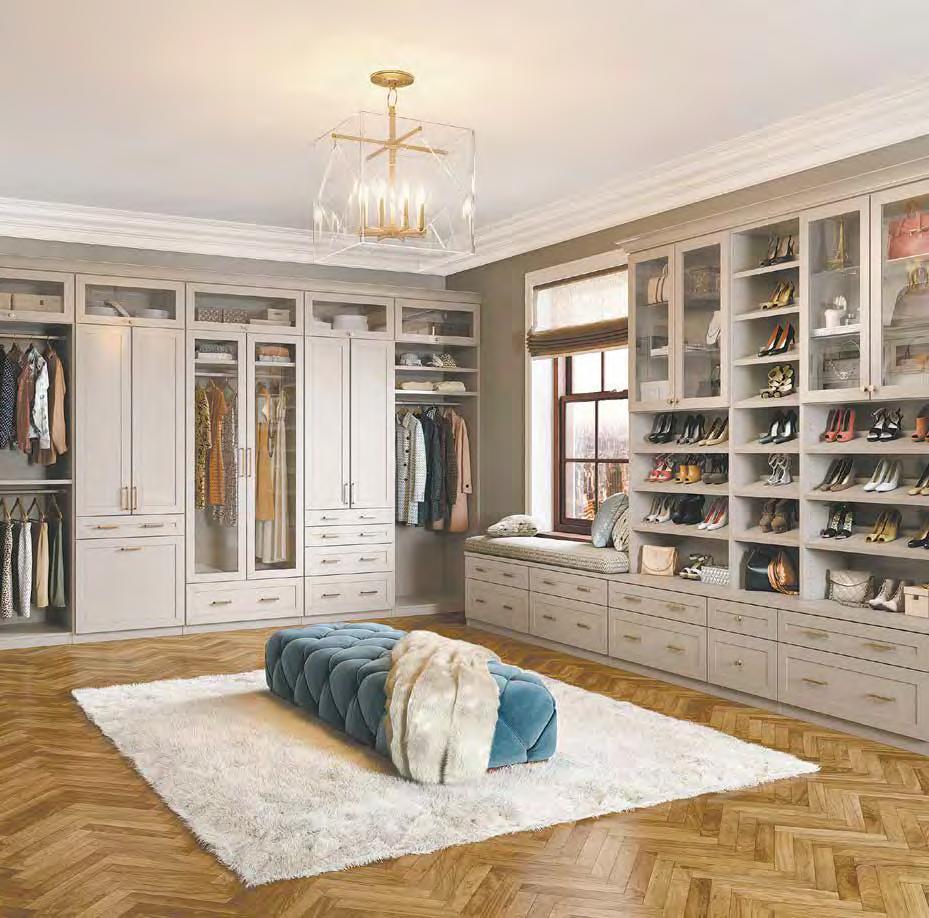



Upcycled home decor, an innovative and environmentally conscious approach to interior design, has gained significant popularity in recent years. It’s a creative way to transform discarded or unused items into unique and stylish decor pieces that not only enhance the aesthetics of your home but leads to being a responsible consumer. This trend goes beyond traditional recycling by adding a touch of creativity and personalization to everyday items.
Creativity takes center stage in upcycled decor projects. The process involves envisioning new uses and forms for old items, turning them into functional and aesthetically pleasing objects. An old ladder can become a stylish bookshelf, a vintage suitcase can transform into a charming coffee table, and discarded windows can find new life as decorative mirrors. This creative transformation not only adds character to your space but also sparks conversations about the history and story behind each piece.
For insight into this trending hobby, pastime, and sometimes even lucrative side gig, we spoke with Cathryn Mezzo, a multi-disciplined artist in Mineola who upcycles as a hobby for herself.
“Does the aesthetics attract my eye, its shape and design? There are several things that I look at when I am shopping for a piece,” Mezzo shared. “It may be obscured by a dark stain or ugly cushion. I try to ignore the superficial aspects like the color or the upholstery.”
While visualizing a furniture piece’s potential, Mezzo said the first thing she looks for is dovetailing on the drawers.
“That means it’s well-made, not screwed together and will easily fall apart. I look for a logo or name on it, inside a drawer, on the back or underneath the piece. Usually as I am in the shop, I Google it to get some information, to check the brand name or the value. I bought something with a logo inside and brass accents once. The brass knobs were so dirty that it was hard to tell it was brass until I got it home and started polishing it.” It was a mid-century modern piece, worth more than the money that she spent on it.
Upcycling also encourages a do-it-yourself (DIY) mindset. Engaging in upcycled decor projects allows you to


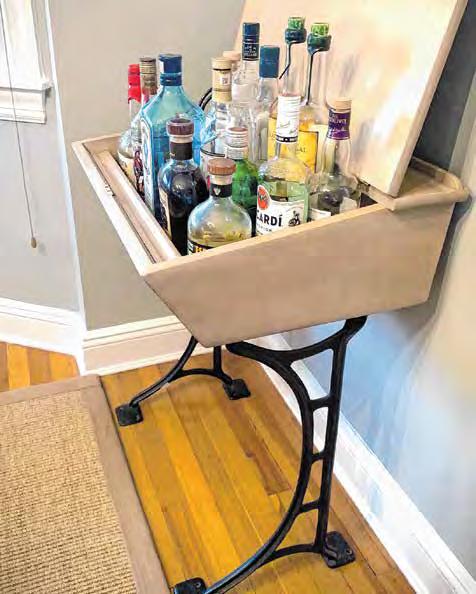
explore your creative side and develop practical skills.
“A good cleaning with soap and water, sometimes a cleaning with lemon oil on the wood will help to bring something back to life,” Mezzo said. “Then you can start to see what really needs attention.”
From sanding and painting to sewing and repurposing, you can learn various techniques that not only benefit your home but can also lead to new hobbies and passions. DIY upcycling can be a fulfilling way to spend your time, enhancing your living space while nurturing your creative abilities.
“I got a sander for Christmas, so I am willing to go a little further like sanding and repainting something myself before I look for outside help,” Mezzo said. “If it is something that is supposed to look a little rustic or bohemian, then I will do it myself.”
YouTube is loaded with DIY tips and
tutorials to help restore nearly anything yourself. Most people draw the line at cosmetic fixes before seeking help from a professional like recaning, reupholstering, major woodworking repairs.

“If I am looking for something to be a highend finish, I leave that to the professionals,” Mezzo said.
Some of the quickest, most reliable resources to finding a good professional who specializes in the repairs you need are simply word-of-mouth. Ask a neighbor, post an “in search of” note on your neighborhood Facebook page and you are likely to uncover several suggestions.
Another advantage of upcycled decor is its affordability. Purchasing new furniture and decor items can be expensive, but upcycling provides a cost-effective alternative. Many
upcycling projects can be completed with minimal investment, often requiring just some basic tools, paint, and a healthy dose of imagination. This makes home decoration accessible to a wider range of individuals, regardless of their budget.
When you are in resale and thrift shops, or even get lucky and see something old curbside, it is easy to overlook a hidden gem. The ripped or worn fabric cushion, the wobbly leg or the stained armrest are all cosmetic and easily remedied. It usually costs less to make minor repairs and bring a piece back into luster than to spend top price on a brand-new equivalent, not to mention, that new piece will not survive half as many decades.
see UPCYCLE on page 6B
Kohler is a brand that consistently delivers innovative designs and customizable experiences. Celebrating its 150th anniversary this year, the company continues to offer what consumers need to feel comfortable and express their unique vision of home. Janine Gruen, showroom manager of the Kohler Signature Store by General Plumbing Supply in Manhasset, outlined the most recent updates.
For homeowners who are remodeling their bathroom or kitchen, the current looks are moving away from monochrome white or gray towards incorporating more natural wood. The fixtures also vary, with black or gold (or both!) providing a strong counterpoint to the clean, almost Scandinavian lines.

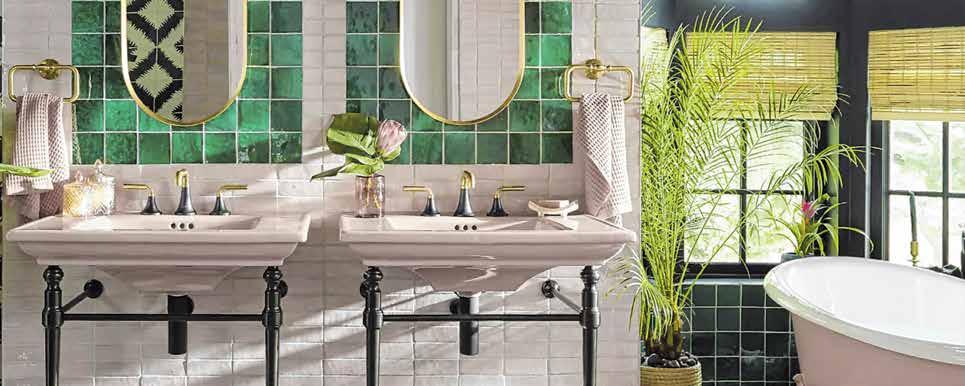
“In a kitchen and bathroom (remodel)
I am seeing a lot of natural wood and white, with gold and black fixtures. You know for a while everything was white and gray and I think people got a little tired of that monotonous thing. [Now we’re seeing] a lot of natural wood color as far as cabinetry. And then white (bathtubs and sinks) with either gold or black fixtures look really pretty,” said Gruen.
Kohler is working to connect its products to the Internet of Things, adding water control to smart home capabilities. This was introduced in 2018 and consists of smart connected plumbing fixtures including bathtubs, mirrors, shower heads, toilets, and shower valves. These new digital fixtures have WiFi capabilities, enabling voice assistant control through Google Assistant, Amazon Alexa or Apple HomeKit, and app control support via the Kohler Konnect app.
“There is something called Kohler Konnect. And that you control from your phone. You could set a time that you want the shower to start and you could give it directions. There’s also something new called h2wise. And that’s great if they are on vacation because it measures the water you are using. If they only want their kids to


take a 10-minute shower, they could control that from the outside. If someone has a leak in their house it will alert them to the fact that there is water running in their home. So that’s a nice feature too.” Gruen said.
Kohler has been collaborating with artists on their designs for some time. This ongoing project allows for some truly innovative choices, such as the collection developed with design firm SR_A and Dr. Samuel Ross. The Artist Daniel Arsham created a limited edition, 3D printed bathroom sink called Rock.01 that mimics natural shapes. The vessel sink 18.02, by Janet Echelman, was inspired by the molecular structure of water. There are also the Global collections, with painted designs by four female artists from around the world.
To celebrate the milestone anniversary, Kohler held a contest to bring back two of its iconic colors from the vault.
They collected more than 100,000 votes and narrowed the choices down to the two winners: “The colors that won were peachblow and spring green, so you’ll be seeing some of that being introduced into the stores, toilets and things in those retro colors.” Gruen said. This collection will allow homeowners to coordinate their toilet, sink, and shower in bold colorways that harken back to the ‘20s and ‘30s.
These modern, streamlined shapes in multiple finishes allow for almost endless variety, creating a truly custom experience that can meet every customer’s needs. Two of the most popular finishes are matte black and gunmetal. Referred to by Kohler as a ‘living finish,’ gunmetal will develop a blue-hued patina over time, while matte black’s color will remain a durable, powdercoat finish.
Kohler Konnect lets you control your water use from your device.

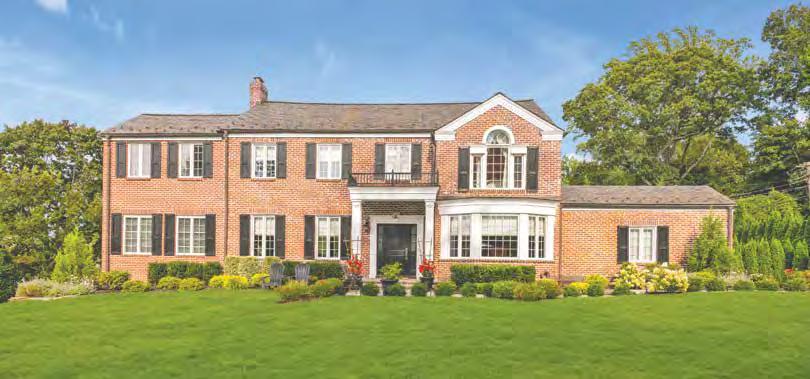

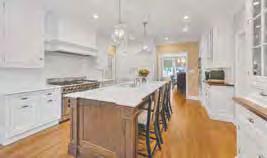


UPCYCLE from page 3B
Upcycled decor pieces are inherently unique and personalized. Since you’re working with items that have a history, each finished project carries a story.
“I have been upcycling decor forever, definitely since I got married, more than 30 years ago,” Mezzo said. “The first thing that I acquired were my husband’s grandmother’s chairs that are still my dining room chairs today.”

The chairs date back to the 1940s.
“We just recently had them refinished and reupholstered,” Mezzo said. “I always loved them because they have this beautiful carved backrest, in addition to the sentimental value.”
The bones of furniture made before the 1960s that are still in existence are of amazing craftsmanship.
“These chairs are rock solid,” Mezzo said. “Chairs now are not as well made; they are not as heavy, and they are always very expensive.”
Whether it’s a table made from reclaimed wood, or a lampshade crafted from old maps, your decor becomes a reflection of your individuality and taste. These pieces can’t be replicated in mass production, ensuring that your home truly stands out.
Embracing upcycled home decoration also encourages a shift away from the throwaway culture that has become so prevalent in modern society. It promotes a
sense of mindful consumption and a deeper appreciation for the value of items. Rather than discarding things at the first sign of wear, upcycling urges you to see potential in the old and to extend the lifespan of your belongings.
Upcycled home decoration offers benefits that extend beyond aesthetics. It’s a sustainable and creative way to decorate your living space while minimizing environmental impact. Through upcycling, you transform discarded items into cherished decor pieces,

each with its own story to tell. This practice encourages resourcefulness, creativity, and a sense of responsibility towards the environment, all while allowing you to create a home that’s uniquely yours. Whether you’re repurposing old furniture or breathing new life into forgotten trinkets, upcycled decor embodies the beauty of innovation and sustainability in interior design.
There are literally hundreds of thrift, resale and consignment shops, not only in Nassau County, but across Long Island

in any direction. It is nearly impossible to list every one of them. In addition to curbside on garbage night, eBay, of course, Facebook Marketplace and local online sale groups, here are a couple of places to start looking.
· St. Vincent De Paul in Garden City Park
· Savers in Hempstead
· United Methodist Church Thrift in Floral Park
· Wilson’s Dry Dock in Glen Cove
· Long Island Trading Post in Bellmore
Upcycling revolves around the idea of repurposing items that might otherwise end up in landfills. Old furniture, salvaged wood, vintage clothing, discarded glass bottles and various odds and ends can find new life as stunning decor elements. From small decorative accents to larger statement pieces, the possibilities are as diverse as the items themselves.
One of the primary benefits of upcycled home decor is its positive impact on the environment. By reusing materials, you reduce the demand for new resources and minimize the resources needed for manufacturing and transportation. This reduction in waste and carbon footprint aligns with a more sustainable lifestyle and helps combat the environmental challenges.
Visit www.cathrynmezzo.com and mezzoartanddesign.com to learn more about Mezzo’s work. Follow her on Instagram (@cmezzoart) for her daily updates and artistic revelations.

A highly experienced and motivated team of professionals with over 65 years of combined experience in residential and investment properties. With superior skills, knowledge and resources, The Liappas Team delivers results! We look forward to working with you!
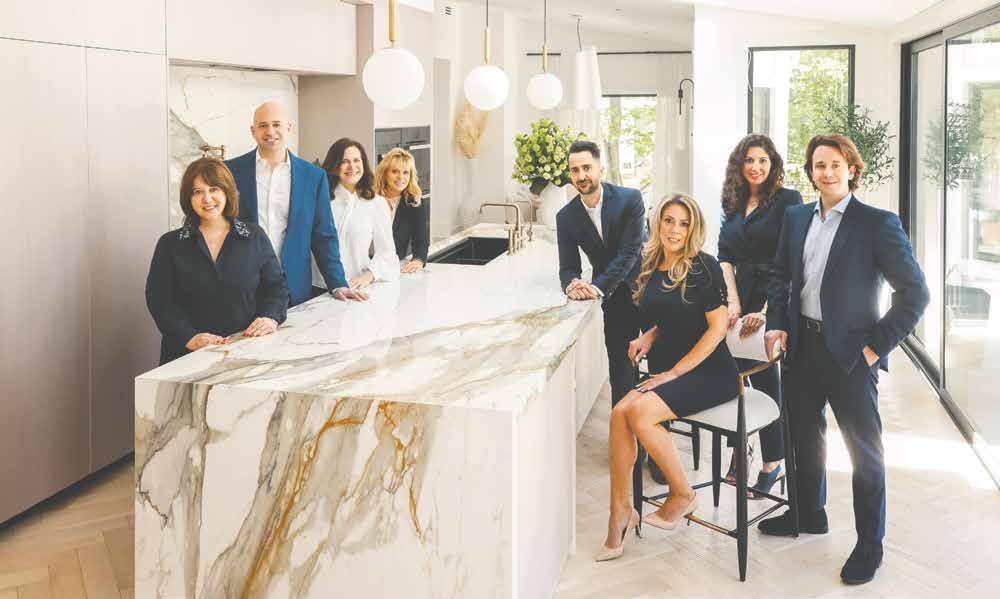
Connie Liappas
Licensed Associate RE Broker connie.liappas@compass.com
M: 516.319.3274 | O: 516.517.4751
Michael Fthenakis
Licensed RE Salesperson michael.fthenakis@compass.com
M: 631.748.3393
Nicholas Liappas
Licensed Associate RE Broker nicholas.liappas@compass.com

M: 516.214.7761
Zach Zachariadis
Licensed RE Salesperson zach.zachariadis@compass.com
M: 516.967.4276
Kristen Vlahopoulos Licensed RE Salesperson kristen.vlahopoulos@compass.com
M: 516.672.1577
Nicole Pappas
Licensed RE Salesperson nicole.pappas@compass.com
M: 917.589.7888
Carolyn Gelb
Licensed RE Salesperson carolyn.gelb@compass.com
M: 516.359.5660




PREMIERE PROPERTIES, POWERFUL PRESENCE.









As the crisp air and vibrant colors of fall usher in a new season, decorating your yard naturally can create a warm and inviting atmosphere that celebrates the beauty of this time of year. By incorporating elements from nature and embracing the essence of autumn, you can transform your outdoor space into a captivating and cozy retreat.
Utilize the abundance of nature’s bounty during the fall harvest. Display pumpkins, gourds, and squashes of various sizes and colors along pathways, steps, or on rustic wooden benches. These natural elements instantly evoke the spirit of autumn and provide a warm welcome to visitors.

Let the changing leaves be your canvas. Gather fallen leaves in rich hues of red, orange, and gold, and arrange them in woven baskets or scatter them along walkways. You can also create leaf garlands to drape across fences or porch railings, bringing the vibrant colors of fall closer to your living space.
Incorporate rustic elements like cornstalks and hay bales for an authentic fall feel. Prop cornstalks against the sides of your porch or door, and arrange hay bales as seating or as platforms for displaying other decorations.

Choose late-blooming flowers like chrysanthemums, marigolds, and asters to add bursts of color to your yard. Plant them in decorative pots or planters, and strategically place them around your outdoor space to create focal points.
Create charming pathways using pinecones, acorns, or small stones. Arrange them in patterns or shapes on the ground to guide visitors through your yard while highlighting the season’s treasures.
Beyond traditional carving, c onsider decorating pumpkins in various creative ways. Paint them with intricate patterns, u se natural materials like twigs and leaves to craft unique designs, or stack them to create playful pumpkin “sculptures.”
Embrace the cozy ambiance of fall evenings with warm and gentle lighting. Use lanterns, string lights, or candles placed safely in glass containers to cast a soft glow across your yard.
Get creative with DIY projects using natural materials. Craft wreaths from

dried leaves and twigs, make garlands using pinecones and twine, or create a centerpiece by arranging branches and berries in a decorative vase.
Set up an inviting seating area where you can relax and enjoy the autumnal surroundings. Arrange outdoor urniture with cozy cushions and blankets, encouraging friends a nd family to gather for warm conversations and leisurely moments.
The beauty of fall lies in its simplicity. Let the natural elements shine by avoiding clutter and allowing the colors and textures of the season to take center stage.
By decorating your yard naturally for fall, you not only enhance the visual appeal of your outdoor space but also connect with the rhythms of nature. Embrace the charm of this season by incorporating these ideas, and let your yard become a testament to the splendor of autumn’s offerings.

Throughout history, humans have often turned to superstitions as a way to bring comfort and a sense of control in the face of the unknown. Even in the modern world, where science and technology dominate, superstitions still find their place, especially in areas as fundamental as homebuilding. Homebuilders and homeowners have held onto various superstitions, passed down through generations, as they embark on the journey of creating a safe and harmonious dwelling. Here are five intriguing homebuilding superstitions, each with its own unique origin and significance.
One of the most well-known homebuilding superstitions involves the doorstep or threshold of a new home. It is believed that when entering a new home for the first time, it is essential to carry a loaf of bread, a pinch of salt, and a sprig of greenery. This ritual is thought to bring luck and prosperity to the new inhabitants. The bread symbolizes sustenance, the salt wards off evil spirits, a nd the greenery represents growth and vitality.
This superstition has its origins in ancient times when people believed in protective deities and spirits that dwelled in the thresholds of their homes. By placing offerings of food and greenery, individuals sought to appease these spirits and gain their favor. Over time these practices evolved into a more standardized ritual, even as the beliefs in spirits waned. Today, even those who don’t believe in supernatural forces often uphold this tradition, respecting it as a cultural and familial legacy.
The superstition of lucky numbers is pervasive in various cultures a round the world, and it extends to the realm of homebuilding as well. In many cultures, the number 7 is considered highly auspicious. When constructing a new home, some individuals go to great lengths to incorporate the number 7 into their house number, the total number of rooms, or even the dimensions of c ertain rooms.
The origin of this superstition can be traced back to ancient civilizations, including the Babylonians and Egyptians, w ho believed that certain numbers held mystical or divine significance. The number 7 was often associated with completeness, perfection, and spiritual harmony. This belief was further reinforced by its appearances in religious texts and cultural practices.
The number 7’s reputation for luck has been embraced even by those who do not adhere to religious or supernatural beliefs. It has become a symbol of harmony and balance in home design, often used to create a sense of calm and tranquility within living spaces.
The superstition of incorporating oak and ivy into the construction of a new home is another intriguing practice. According to this belief, planting an oak tree on one side of the house and ivy on the other side is said to bring protection, strength and lasting love to the household. The oak is seen as a symbol of stability and protection, while ivy represents fidelity and growth.
This superstition has its roots in ancient Celtic and Germanic traditions, where both oak and ivy were revered as sacred plants. These plants were associated with powerful deities and were believed to possess magical properties. Oak trees, with their long lifespan and sturdy nature, were considered to have protective qualities, while ivy’s ability to cling and grow symbolized the enduring bonds of love and unity.
Incorporating oak and ivy into the home’s surroundings was believed to create a harmonious environment that would foster strong family connections and shield the inhabitants from negative energies. Even today, many homeowners choose to embrace this tradition, either symbolically by using oak and ivy motifs in decorations or practically by planting these plants near their homes.

The superstition of hanging a horseshoe above the entrance to a new home is prevalent in many cultures. The horseshoe is often positioned with the open end facing upward to catch and hold good luck. This belief dates back to medieval times when iron was considered a protective material against evil spirits and supernatural forces.
The origin of the lucky horseshoe superstition can be traced to a blend of folklore and practicality. Iron was believed to possess magical properties that could ward off malevolent spirits, making the horseshoe a natural choice for protection. Horseshoes were readily available and easily repurposed, making them a practical choice for inclusion in homebuilding rituals.

One common superstition in homebuilding involves breaking a bottle of wine or champagne against the foundation of a new house. This ritual is believed to bring good luck and ward off evil

spirits. The origin of this tradition dates back to ancient cultures, particularly the Greeks and Romans. In these societies, it was customary to pour libations to honor gods and seek their favor. The act of breaking a bottle symbolized the release of positive energy and the invitation of divine protection.
Over time, this practice transformed into a more symbolic gesture, and the breaking of a bottle evolved into a way of inaugurating a new home with positive vibes. The act of shattering the bottle against the foundation became associated with the hope for a happy and prosperous future in the new dwelling.
Homebuilding superstitions offer a glimpse into the rich tapestry of human beliefs and practices. These rituals, originating from diverse cultures and time periods, reveal our shared desire for protection, harmony and good fortune as we embark on the journey of creating a home. Whether through breaking bottles, incorporating lucky numbers, or invoking the power of nature, these superstitions remind us of the fascinating ways in which our beliefs shape the spaces we inhabit.
Discover the latest gems in home decor with this season’s book releases. Immerse yourself in innovative design concepts, sustainable trends, and expert tips to elevate your living spaces. From minimalist chic to cozy maximalism, these books offer fresh perspectives, making your home a canvas of style, comfort and personality.
Ralph Lauren A Way of Living: Home, Design, Inspiration

A stunning celebration of Ralph Lauren’s signature home collections—including t he designer’s own homes—which have inspired the world of interior design for nearly half a century.
The cinematic vision of Lauren is brought to life with a stunning and intimately written book that spans decades of innovation and influence by the iconic American designer. Ralph Lauren: A Way of Living, published by Rizzoli New York, commemorates the 40th anniversary of the
home collection with the first comprehensive volume dedicated to the signature style of Lauren and his pioneering lifestyle approach to design. From trailblazing innovations that revolutionized the home industry to conceptualizing residential retailing and perfecting t he art of hospitality, Lauren has created a multifaceted world that evokes emotion and inspires a more beautiful way of life.
Heidi Caillier: Memories of Home: Interiors
In her debut book, designer Heidi Caillier shows how to mix moody color with layers of pattern, natural materials, and textures to
Summer and backyarding—the act of t aking our indoor life outside—go hand in hand. This time of year, especially the backyard beckons for entertaining, working, exercising, relaxing and reconnecting. But those looking to m ake improvements to their family yard for even more backyard fun this summer need to avoid some common backyard renovation mistakes. Here are the top backyard renovation mistakes to avoid:

• Not considering your yard’s full potential.
• Planting fake grass.
• Forgetting the “right plant, right place” rule.
• Not treating your yard like part of the connected ecosystem.
• Not utilizing
community green spaces.
• Failing to keep safety in mind.
—Image and content courtesy of TurfMutt Foundation
create spaces that are both beautifully curated and comfortably livable.

Caillier believes that our homes should create a sense of place, and serve as the setting for lifelong memories. In her first book, she shares 12 houses from across the country, from the islands of Puget Sound to the Berkshires. The rooms of these houses are simultaneously nostalgic and of the moment. Caillier is a master of mixing patterns, combining florals with graphic lines and shapes, as well as using deeper, muddy colors to create coziness and warmth. There is a tension between masculine and feminine, modern and traditional as vintage pieces mingle with contemporary to create spaces that feel intrinsically inviting and effortlessly designed.

The long-awaited design book from Shea McGee, beautifully showcasing all that is possible for every room of your home.



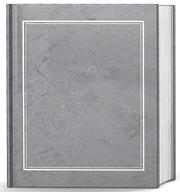
Whether it’s through her thriving design business, Studio McGee, her popular Netflix series, Dream Home Makeover, or her online community of over five million followers, McGee has shown the world how the principles of high-end design can be applied to any home. As the title
of her new book suggests, designing rooms for maximum impact while also remaining approachable to any who enter is an art. But it’s also a skill that can be learned because it’s inside each one of us.


Erin Napier, designer, host of HGTV’s Home Town, and author of Make
Today, returns with a gorgeously illustrated and one-of-a-kind celebration of the homes we live in and love. Co-authored with her husband, Ben, the duo share a collection of essays walking us through every room in their home, telling the story of a family’s life, of the days that made their home the place she longs for when she’s away.
Our homes are more than an assemblage of bricks and glass, wood and nails. They are the keepers of our childhood memories, our milestones, and heartaches. They evolve as we do. As a family grows and eventually retracts, a home can change hands and begin again. We are the chapters in the book of a house. They carry on after we are gone, setting the stage for another story, a new life, new memories.
—Descriptions and images courtesy of the respective publisher or Amazon. Compiled by Christy Hinko.
In recent years, a distinctive trend in home decor has emerged, captivating homeowners and interior design enthusiasts alike. The “man cave” trend has taken root, transforming traditional notions of interior design and redefining the way people create and personalize their living spaces. A man cave is a dedicated space within a home, often designed with a masculine aesthetic and filled with items that reflect the occupant’s passions, hobbies, and interests. This trend is more than just a decorative style; it’s a manifestation of individuality, a space where one can retreat and recharge while surrounded by elements that resonate with their identity.
The concept of the man cave can be traced back to the idea of having a private space for relaxation, entertainment, and self-expression. Traditionally, these spaces were relegated to the basement or garage, serving as a workshop or a place for hobbies that may not align with the aesthetics of the main living areas. Over time, the man cave has evolved into a legitimate design trend, prompting a reimagining of how these spaces are utilized and styled.
One of the defining characteristics of the man cave trend is its emphasis on personalization. These spaces are often a reflection of the occupant’s interests

and passions, ranging from sports memorabilia and vintage arcade games to home t heaters and even sophisticated cocktail bars. This level of customization empowers individuals to create an environment that resonates with them on a deep level, fostering a sense of belonging and comfort within their own homes.
The man cave trend draws inspiration from various sources. Industrial aesthetics, with their raw materials and rugged textures, are often incorporated to lend a masculine vibe. Exposed brick walls, metal accents, and reclaimed wood are frequently utilized to create a sense of authenticity and character. Color palettes tend to be rich and
earthy, featuring tones of deep blues, dark grays, and warm browns, which contribute to the cozy and inviting atmosphere of t hese spaces.
Another intriguing aspect of the man cave trend is its multifunctionality. While these spaces are often associated with relaxation and leisure, they are not limited to any specific purpose. A man cave can seamlessly blend entertainment, productivity, and personal growth. It can house a well-equipped home gym for fitness enthusiasts, a dedicated library for avid readers, or a recording studio for musicians. This adaptability adds to the trend’s appeal, as it caters to a wide range of interests and lifestyles.
Moreover, the man cave trend challenges traditional gender norms and encourages a more inclusive approach to interior design. While the term may suggest a space exclusively for men, the trend has evolved to encompass all genders and identities. Everyone deserves a space where they can freely express themselves and indulge in activities that bring them joy, regardless of societal expectations. In an era where self-care and mental
well-being are paramount, the man cave trend offers a unique solution for creating personal sanctuaries within the confines of one’s own home. These spaces serve as reminders that amidst life’s demands, carving out time and space for oneself is not only permissible but essential. By embracing this trend, individuals are taking a conscious step towards self-discovery and self-nurturing.
The man cave home decor trend has evolved from a modest concept to a transformative movement within interior design. By allowing individuals to create customized spaces that celebrate their passions and interests, the trend has redefined the way people relate to their homes. Whether it’s a high-tech entertainment hub, a serene meditation room, or a collector’s paradise, the man cave trend exemplifies the power of design to shape environments that foster self-expression, relaxation, and personal growth. A s homes continue to evolve into holistic spaces that support various aspects of life, the man cave trend stands as a testament to the significance of creating spaces that resonate with the essence of who we are.




All levels welcome. Adults and Teens 16+
Tuesdays and Wednesdays: 10 am-12:30 pm and 1:30-4 pm

Fall Session I (7 weeks)
September 12, 19, 26, October 3, 10, 17, 24
Fall Session II (7 weeks)
November 7, 14, 21, 28, December 5, 12, 19
Thursdays: 10 am-12:30 pm
Fall Session I (7 weeks)
September 14, 21, 28, October 5, 12, 19, 26
Fall Session II (7 weeks)
November 2, 9, 16, 30, December 7, 14, 21
Tuesdays: 9:30 am-12 pm
Fall Session I (6 weeks)
September 19, 26, October 3, 10, 17, 24
Fall Session II (6 weeks)
November 7, 14, 21, 28, December 5, 12
Tuesdays: 1-3:30 pm
Fall Session I (6 weeks)
September 19, 26, October 3, 10, 17, 24
Fall Session II (6 weeks)
November 7, 14, 21, 28, December 5, 12
Wednesdays: 10 am-1 pm
Fall Session I (6 weeks)
September 20, 27, October 4, 11, 18, 25
Fall Session II (6 weeks)
November 1, 8, 15, 29, December 6, 13

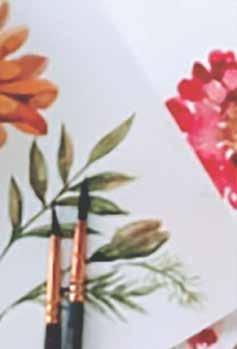

Thursdays: 9:30 am-12 pm
Fall Session II (6 weeks)
November 2, 9, 16, 30, December 7, 14


